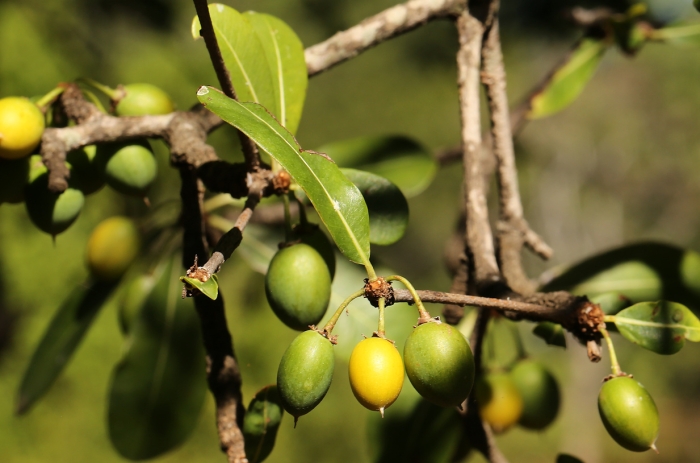Milkwood
(Mimusops zeyheri)
Milkwood (Mimusops zeyheri)
/
/

Wynand Uys
CC BY 4.0
Image By:
Wynand Uys
Recorded By:
Copyright:
CC BY 4.0
Copyright Notice:
Photo by: Wynand Uys | License Type: CC BY 4.0 | License URL: http://creativecommons.org/licenses/by/4.0/ | Rights Holder: Wynand Uys | Publisher: iNaturalist | Date Created: 2021-01-16T06:53:01-08:00 |

























Estimated Native Range
Summary
Mimusops zeyheri, commonly known as milkwood or Transvaal red milkwood, is an evergreen tree that can be found in the dry woodland and rocky outcrops of southern and tropical Africa, extending from the east coast to the interior regions. It reaches up to 49 feet (15 meters) in height and is characterized by a dense, rounded crown. The leaves are leathery, entire, and when young, they are covered in short rusty red hairs, which mature to a glossy green. From October to January, milkwood produces fragrant white flowers that are followed by yellow, sweet, edible fruits that are enjoyed by both humans and wildlife.
Milkwood is valued for its hard and tough wood, which has historically been used in traditional wagon making. The tree is also appreciated for its ornamental qualities, including the fragrant flowers and attractive foliage. In cultivation, it requires well-drained soils and can tolerate a range of soil types, provided they are not waterlogged. Milkwood is suitable for planting in gardens and parks, especially in areas that replicate its native dry woodland conditions. It prefers full sun but can tolerate light shade. While generally pest-free, it can occasionally suffer from root rot if planted in poorly drained soils.CC BY-SA 4.0
Milkwood is valued for its hard and tough wood, which has historically been used in traditional wagon making. The tree is also appreciated for its ornamental qualities, including the fragrant flowers and attractive foliage. In cultivation, it requires well-drained soils and can tolerate a range of soil types, provided they are not waterlogged. Milkwood is suitable for planting in gardens and parks, especially in areas that replicate its native dry woodland conditions. It prefers full sun but can tolerate light shade. While generally pest-free, it can occasionally suffer from root rot if planted in poorly drained soils.CC BY-SA 4.0
Plant Description
- Plant Type: Tree
- Height: 20-50 feet
- Width: 15-25 feet
- Growth Rate: Moderate
- Flower Color: White
- Flowering Season: Spring
- Leaf Retention: Evergreen
Growth Requirements
- Sun: Full Sun, Part Shade
- Water: Medium
- Drainage: Medium, Fast
Common Uses
Bee Garden, Bird Garden, Butterfly Garden, Drought Tolerant, Hedges, Low Maintenance
Natural Habitat
Dry woodland and rocky outcrops
Other Names
Common Names: Mooi-noem, Large Red Milkwood
Scientific Names: , Mimusops zeyheri, Mimusops affinis, Mimusops blantyreana, Mimusops decorifolia, Mimusops monroi, Mimusops zeyheri var. laurifolia,
GBIF Accepted Name: